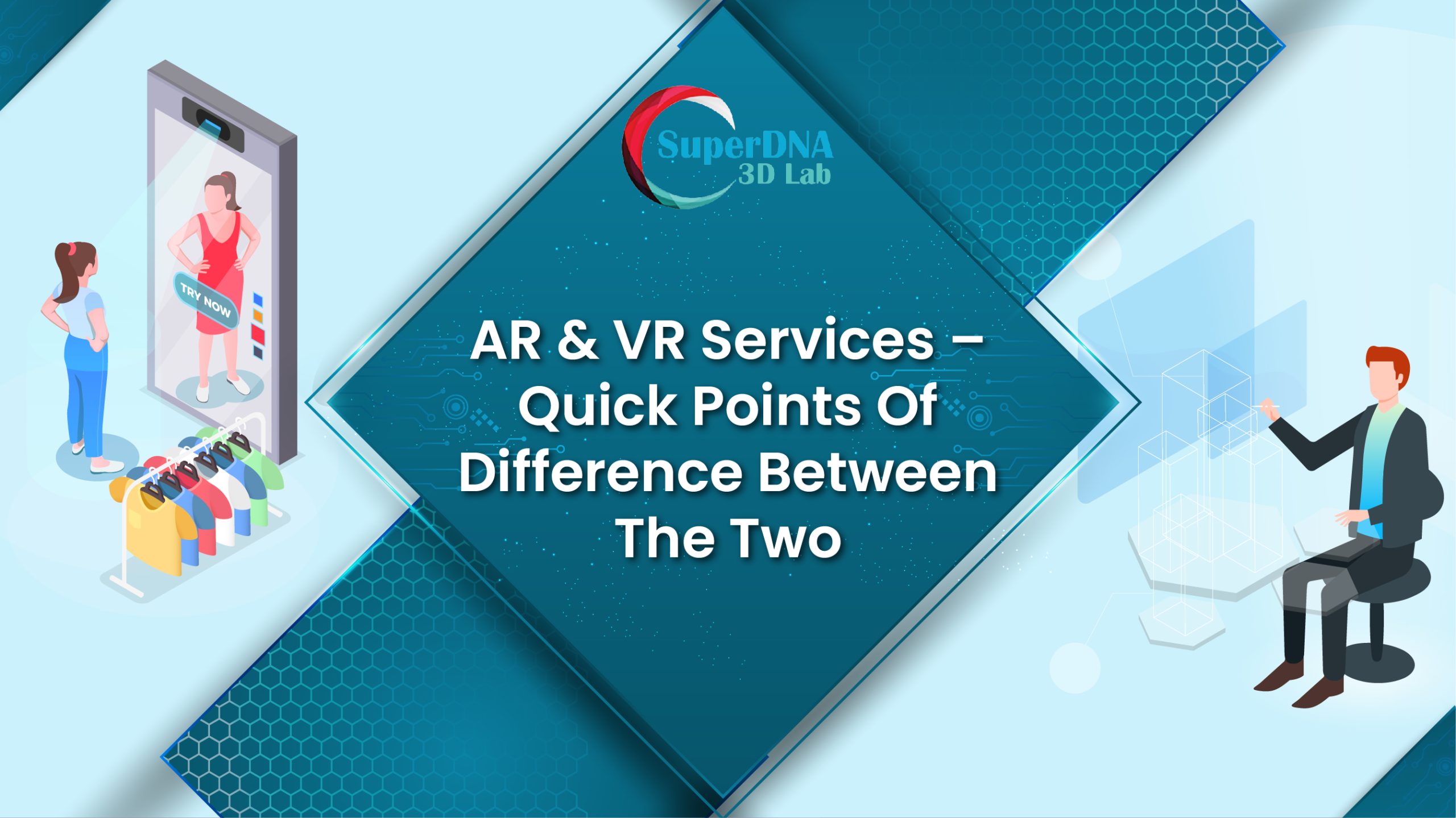
The current e-Commerce scenario stands to benefit a lot from augmented reality and virtual reality. This is because consumers today have become well-versed with the most advanced technology that utilizes numerous elements such as 3D architecture, virtual walkthroughs, artificial simulations, and a lot more that transcends beyond two-dimensional and static content. They want AR and VR!
They seek more engagement, exciting content, better visuals, and immersive experiences in the comfort of their homes. This is why incorporating AR and VR becomes essential to the success of your eCommerce platform. Let’s understand what both these concepts are and what makes them different from each other.
What Is Augmented Reality?
Augmented reality is going to change the world of online retail. When it comes to fashion brands and furniture retailers, these are the sectors that stand to gain the most from AR applications. AR services can help you sell products of various categories online where the user is able to place realistic and true-to-scale 3D models in their real environment. All they need is their smartphone camera and a highly compatible and easily downloadable 3D model from the website or online store of the fashion or furniture brand. These same 3D models can be downloaded by scanning a simple QR code as well. Then these models can be projected on your body in case of fashion apparel and your living space in case of a furniture piece.
What Is Virtual Reality?
Virtual reality, on the other hand, is more of an immersive visual environment that the user can experience with the help of product demonstrations, moving pictures, and 360-degree view videos. In this case, they will have to make use of a virtual reality headset. This is a great way to enhance your in-store experience and make shopping even more interesting for your users without them having to walk around the entire space and physically check out your items. We will explain how virtual reality works in e-commerce in the coming sections.
But For Now, Let’s Understand A Few Differences Between Augmented Reality And Virtual Reality
- Immersion Versus Augmentation
When we talk about the biggest difference between augmented reality services and virtual reality services, the former augments the real world that you live in with the use of software and gadgets. However, the latter intends to create an immersive environment that is totally distinct from your real environment with the help of artificial intelligence-equipped headsets. The perfect example of an augmented reality application in action is Pokemon Go. The ideal example of a virtual reality headset in action is the much-talked-about Meta’s Oculus Quest 2.
- Difference In Portability
As you can see from the point explained above, virtual reality requires you to invest in equipment such as headsets, earphones, controllers, haptic gloves, and various other components. You also have to make sure that the physical environment where you are using this gear is completely safe and free of any obstructions. On the other hand, when you use augmented reality applications, the only thing that you need is your smartphone, and in some cases, AR-enabled glasses. So, if you put it in simpler words, you don’t need to clear out the clutter in your room if you want to use AR applications.
- Degree Of Accessibility
At this point of time, augmented reality applications are far more accessible to your customers. Because there is a significant amount of investment involved in virtual reality experiences, these are limited in number. Right now, there are more than 3 billion smartphone users in the world today. So yes, if you invest in the right AR technology, you can reach out to a wider customer base very easily and much faster than a typical VR service provider can enable you to.
Now, Let’s Have A Look At A Few Statistics Related To Both Augmented Reality And Virtual Reality
Augmented Reality
Do you know that the worldwide advertising revenue generated from AR applications was recorded at $1.41 billion in 2020?
- According to an independent study, this advertising revenue can easily exceed the $8 billion mark by the end of 2024
- By the end of 2022, there will be more than 95.1 million people in the US alone who will be using some kind of AR-enabled device or probably an AR application on their smartphone
Virtual Reality
According to an independent study, by the end of 2020, close to 50 million people were using VR technology at least once per month
VR is going to become more accessible and research suggests that the user base is going to rise to at least 64 million by the end of 2022
To Sum It Up
The world of AR, VR, and 3D is constantly expanding and has found its way into the marketing function of online retailers and several e-Commerce businesses. The route from here is only forward and more lucrative. The only thing that seems to be stopping you from becoming huge and successful is your own reluctance. Give it a thought while there’s still time.